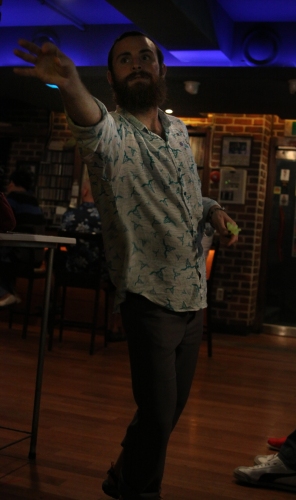Destination: Wonpyeong Beach / Bigeumdo (Shihan country, Jeollanam-do)

To put it mildly, Wonpyeong Beach (원평해수욕장) is off the beaten path. Bigeum-do is 54.5 kilometers (about 34 miles) from the mainland of Dae Han Min Guk. Of the 827 islands that dot the shores of Shinan county in Jeollanam-do, Bigeum-do is the seventh-largest. It hearkens back to a time before foreigners taught English in Korea and the locals viewed foreign tourists as curiosities. If you've ever needed that 'far off island getaway' during your stay in Korea - but had to be back to work on Monday - this may be the place.

The road here involves water and sand - a ferry ride and a taxi that actually drove on the sand. The reward is a 1 1/2 kilometer stretch of sand, shallow water, small waves, and straw umbrellas - and almost no one else around. This may not be the case during the peak beach season, but on the late fringe of the season it was wonderful.
After arriving, the Lady in Red and I made our way to one of several white tents. In theory, they cost 20,000 won to use, but there was no one around to collect it. After changing, we took to the peaceful water. It's a very shallow shore, with a very gradual change in depth - you would have to get pretty far out to get further than chest-deep. Part of the beach served as the road through the area, although only a few cars an hour came through.
It's worth noting that there is very little infrastructure built up - no hotels or minbak overlooking the shore, no street food vendors plying overpriced food. The nearest restaurant or supermarket is about ten minutes away on foot. A small police station retains an aura of authority - complete with scuba suits hanging up to dry unguarded. That's part of the charm - you really do feel like you're getting out to the middle of nowhere. It's one element that has left this area unpolluted and untainted.
It's hard to put into words exactly how peaceful this place was. You probably have a picture of a Tahitian or Micronesian beach in your mind - peaceful, quiet, and few other people around. This felt just like that - what few noises there were barely detracted from the near-perfect peace. In my 2 1/2 years in Korea, I have yet to find another place as serene as this one.

A few other islands close to Bigeum-do. The area boasts of its' 천사섬, or 1,004 islands. Only a small fraction of them are inhabited, although many of them seem to be quite close to each other.
After awhile, we meandered down the shore to see what else was happening. The sand continued along Bigeumdo for nearly a kilometer, curving around to an area with a chicken restaurant and a supermarket. Although we didn't get to it, another beach on the island (명사십리해수욧장) is 2.8 kilometers long. Other attractions around include Seongchisanseong Fortress, which was originally built during the Goryeo period, and Seosansa Temple, among others.
The biggest problem is transportation. The ferry may get you to the island, but once there, you're on your own. A bus system of some sort exists - we saw at least one bus stop - but for all practical purposes you'll be calling a taxi to help you get around the island. You'll definitely need to call them, as well - a handful of taxis appeared to exist across the entire island.

A statue found by the harbor. Entitled 독수리, or 'Eagle', it was installed in November 2007.
If you've been meaning to get away to a long-lost beach, make the trip now. The summer season is already winding down, and you can guess how popular beaches are during other times of the year.
Ratings (out of 5 taeguks):Ease to arrive:
Foreigner-friendly:
Convenience facilities:
Worth the visit:
Directions to Wonpyeong Beach / Bigeumdo: Get to Mokpo first - both trains and buses make their way to this southwestern coastal town. Whether you end up at the train station or the bus terminal, buses 1, 1-1, and 1-2 connect you to the ferry terminal (head east in both cases). Once at the ferry terminal, head up to the second floor. Turn right if you want the fast ferry (leaves for Bigeumdo at 7:50am, 8:10am, 1:20pm, and 4:00pm, takes 50 minutes and costs 17,600 won) or turn left if you want the slow ferry (leaves for Bigeumdo at 7am, 1pm, and 3pm, takes 2 1/2 hours and costs 8,000 won).
Once you've arrived at Bigeumdo, you may or may not find a taxi waiting to transport you around the island. If you don't, walk to the nearest store and ask politely for them to call you one. Getting from the ferry to Wonpyeong Beach by taxi cost us 11,000 won each way.
This post was originally published on my blog,Chris in South Korea. If you are reading this on another website and there is no linkback or credit given, you are reading an UNAUTHORIZED FEED.






 RSS Feed
RSS Feed














Recent comments